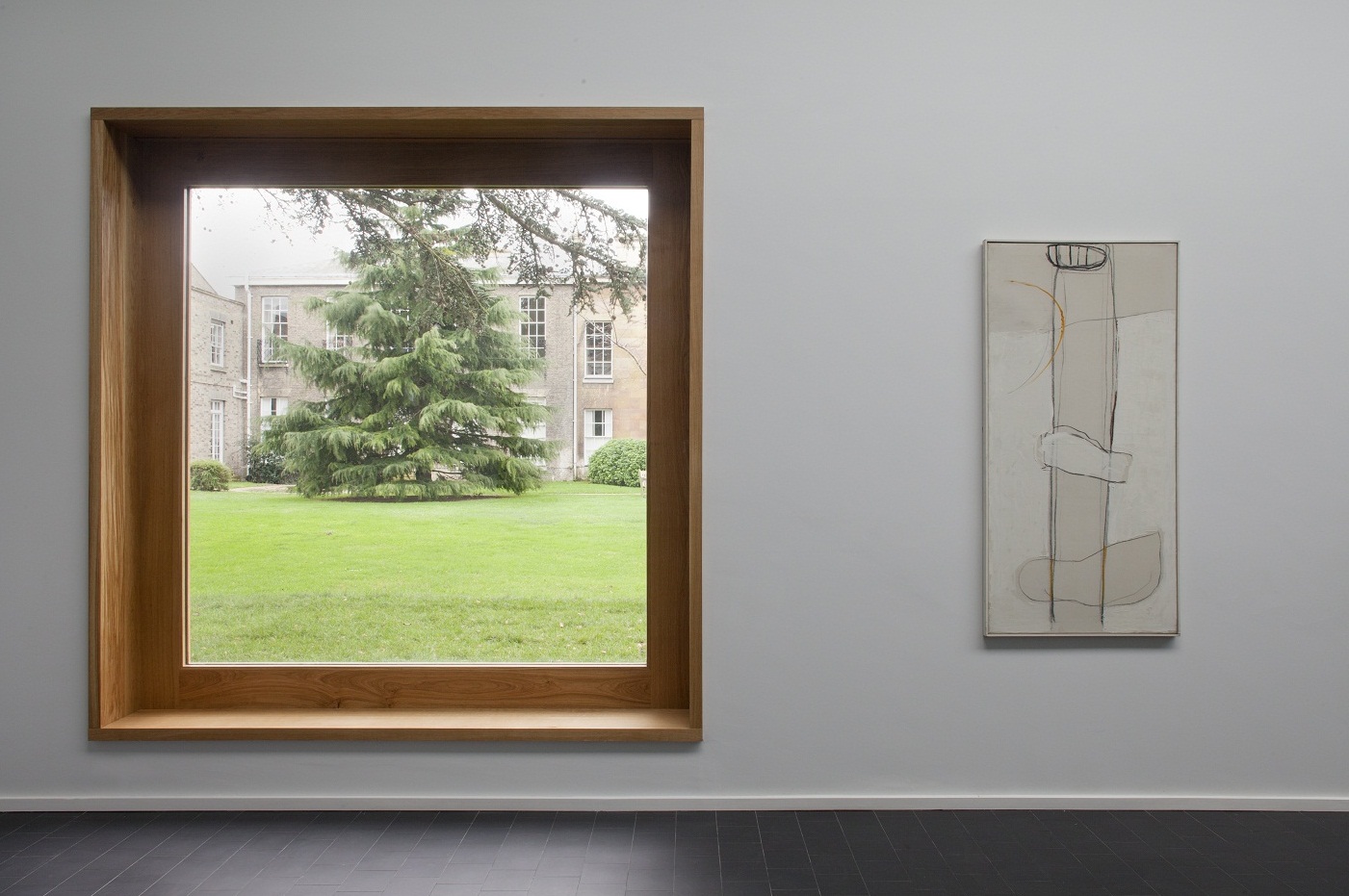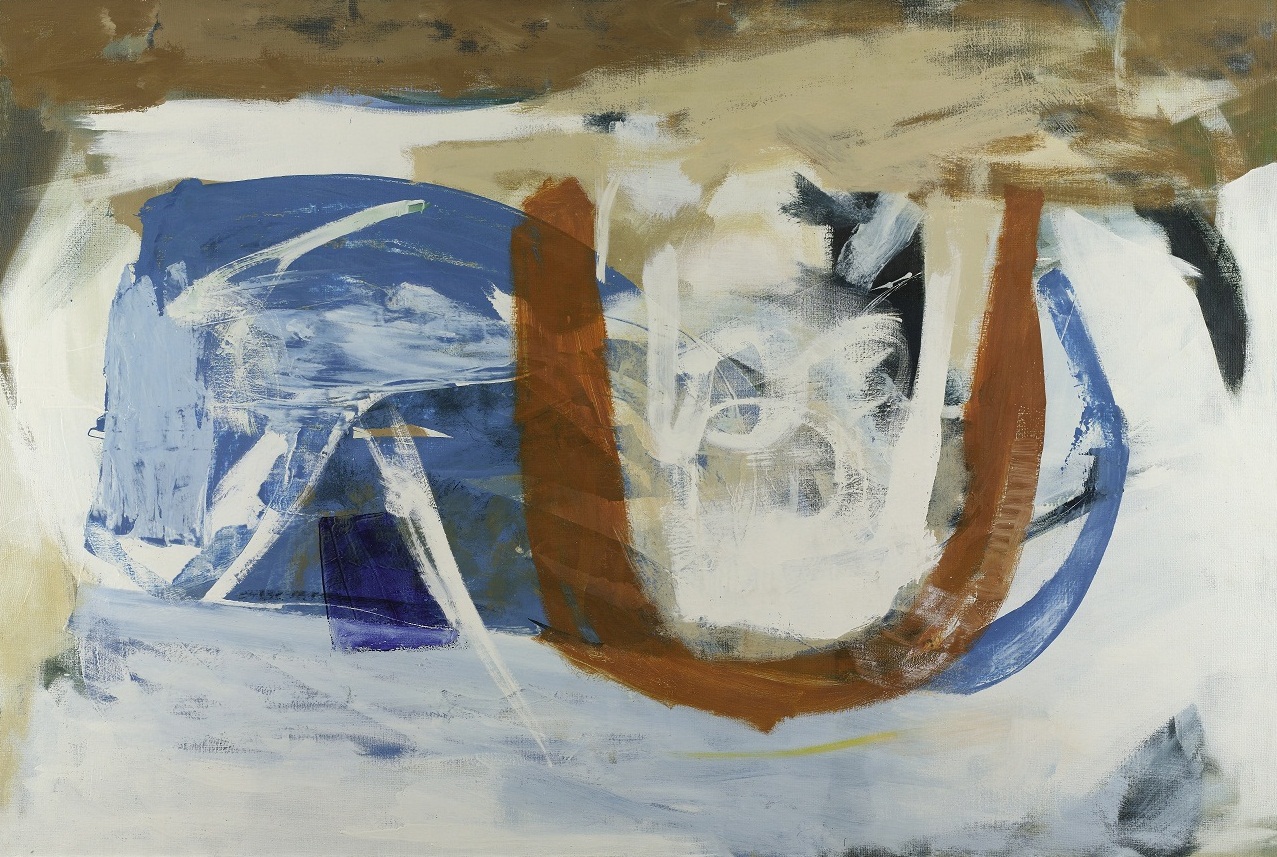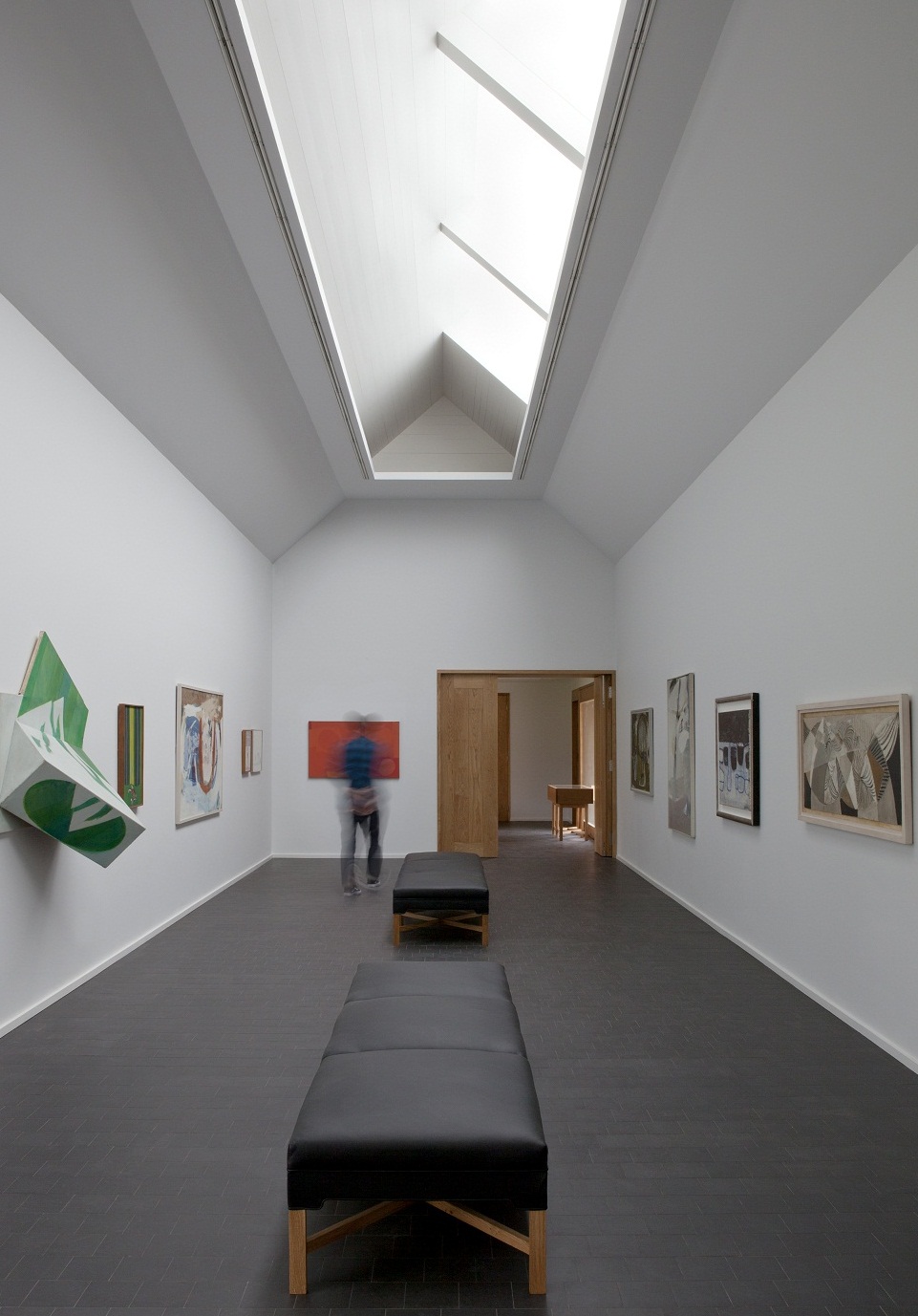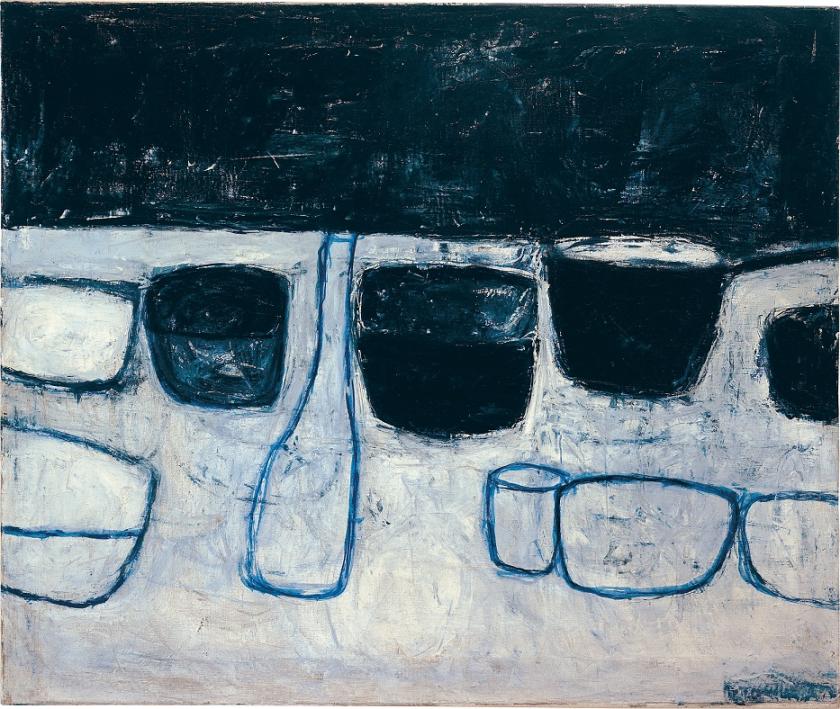The individual colleges of the University of Cambridge can call, when needed, on an astonishing international network of alumni for expert advice, consultation and financial support. Such is the backing for an exquisite new public gallery on the site of Edwardian stables in the grounds of Downing College there.
Now open to the public, the Heong Gallery is, as far as this reviewer can tell, unique in the university’s rich provision of arts and sciences museums. There are nine major such public institutions at Cambridge, among them the Botanic Gardens, museums of zoology, classical archaeology, earth sciences and Kettle’s Yard, which mixes 20th century decorative and fine arts with temporary exhibitions, not to mention the Fitzwilliam, one of the country’s greatest collections, a world museum in miniature, which is marking its bicentenary this year.
The building itself has a kind of opulent austerity, a flexible framework for showing art But the Heong will be the first to showcase small but wide-ranging exhibitions of modern and contemporary work in its own building as part of a college: many colleges have superb collections of their own which are on show in the college buildings, but Downing’s is the first purpose-built space for special exhibitions in a college to be open to the public. It is part of an attempt to consciously expand engagement with visitors who are members neither of the college nor the university.
The Heong, complete with its specially designed furniture and Hans Wegner chairs, is an elongated rectangle, top-lit with a glass roof-light. Architects Caruso St John (responsible, inter alia, for Tate Britain, the Gagosian London galleries, and Nottingham Contemporary) have given the rather restricted space a pleasing sense of openness, with great side windows affording a view of the immaculate rolling lawns of the college gardens (installation image below by Ioana Marinescu). There is even a welcoming space to sit and read the catalogues and relevant publications. The building itself has a kind of opulent austerity, a flexible framework for showing art. It’s a mini-triumph, the restraint of the site nevertheless leading to a space which is somehow as special as its purpose. The Heong’s opening exhibition is of mostly domestic-sized work acquired by Sir Alan Bowness, either given by the artists concerned or bought by the collector. The innovative director of the Tate in the 1980s, Bowness instigated the Turner Prize, and Tate Liverpool, the harbinger of national museums playing a greater part in the regions, as well as the Clore Wing for Turner’s art.
The Heong’s opening exhibition is of mostly domestic-sized work acquired by Sir Alan Bowness, either given by the artists concerned or bought by the collector. The innovative director of the Tate in the 1980s, Bowness instigated the Turner Prize, and Tate Liverpool, the harbinger of national museums playing a greater part in the regions, as well as the Clore Wing for Turner’s art.
After Cambridge, Bowness went to the Courtauld, the only place in Britain in the 1940s where – believe it or not – art history was taught: it was not yet a subject for universities, and only a small component at some art schools. This collection dates from that earlier period in his career when he was at the Courtauld, writing reviews and subsequently working as an art historian and critic. His first job was at the Arts Council, specialising in the southwest region, which included meeting artists, which he had already begun to do at Cambridge when buying for the university’s loan collection.
What is on view is highly personal, but also a revelatory sample from that fertile and energetic period when a broader spectrum of contemporary British painting was waking up to the international art world in the decade 1955-65, and a wider British public was just being alerted to the pleasures of abstract art. The collection on view here is already promised as a gift to the Fitzwilliam, but seeing the score or so works in isolation is a treat. The characteristics of each artist are to the fore: David Hockney’s wit in his homage to Hollywood, Hollywood Garden, a demure frieze of exotic trees, alongside a collage, Dead End Kid, by the politically aware RB Kitaj, his colleague and friend at the Royal College when both were students. Kitaj, we are told, was responsible for telling Hockney to look to his own life for inspiration, with memorable results.
The characteristics of each artist are to the fore: David Hockney’s wit in his homage to Hollywood, Hollywood Garden, a demure frieze of exotic trees, alongside a collage, Dead End Kid, by the politically aware RB Kitaj, his colleague and friend at the Royal College when both were students. Kitaj, we are told, was responsible for telling Hockney to look to his own life for inspiration, with memorable results.
There are Roger Hilton’s anarchic, mischievous squiggles, together with Patrick Heron’s radiant colours dancing across space in wavy stripes of variable widths, and a painting with real oomph in oranges, reds and vermilion. There is a substantial blue still-life by William Scott, as well as his quietly surprising meditation, also with variations of blue, on the ocean (main picture); a trio of superb landscapes inspired and abstracted from the Cornish coast by that obsessive glider through the air, Peter Lanyon, rounds off the regional perspective. (Pictured above, Peter Lanyon's Loe Bar, 1962 © the estate of Peter Lanyon and Modern Art Press 2015.)
 Sir Alan’s own fascinating essay which accompanies the selection describes how he got to know the artists, and the various exhibitions he curated of their work. He saw the period as a turning-point. On a personal note it seems curious that he thought he was not drawn to brilliant colour, given that the overwhelming feeling of this collection is one of exuberant discovery, on the part of the artists – and indeed their growing audience – expressed not only in audacious and inventive form, shape, and textures but delineated in an imaginative range of subtly glowing colours. The whole is optimistic in tone and surprisingly direct in feeling. It is as though the shackles of wartime austerity, and a natural and native reticence were at last being abandoned for a sense of optimism, even hope.
Sir Alan’s own fascinating essay which accompanies the selection describes how he got to know the artists, and the various exhibitions he curated of their work. He saw the period as a turning-point. On a personal note it seems curious that he thought he was not drawn to brilliant colour, given that the overwhelming feeling of this collection is one of exuberant discovery, on the part of the artists – and indeed their growing audience – expressed not only in audacious and inventive form, shape, and textures but delineated in an imaginative range of subtly glowing colours. The whole is optimistic in tone and surprisingly direct in feeling. It is as though the shackles of wartime austerity, and a natural and native reticence were at last being abandoned for a sense of optimism, even hope.
The exhibitions at the Heong will be ongoing, with a show of Ai Weiwei due in June. But two streets and five minutes walk away is the oomph and fizz of the Fitzwilliam, celebrating its 200th anniversary. There is a small exhibition of treasures in a chronological three-dimensional history of the institution in the Octagon Gallery, and the pleasure of walking through the liveliest installation of Old Master paintings in England. In crowded hangs against brilliantly painted walls, punctuated by their fine collection of furniture and decorative arts, the Fitz is above all not just a repository of glorious collections from antiquities to today, backed by profound scholarship, but a museum fearless in the sheer panache and flair with which it presents itself.
The bicentenary year has also brought a wonderful new history of the museum, full of gossip and newly discovered scandal all properly found in the archives, as well as the intellectual history of the Fitzwilliam (Lucilla Burn’s The Fitzwilliam Museum: A History, to be reviewed on theartsdesk shortly) detailing the story of the collections, the collectors, the directors, and the building. Death on the Nile, uncovering the afterlife of ancient Egypt, based on its own collections, opens on 23 February: here even the coffins seem about to dance.
- Generation Painting 1955-65, British Art from the Collection of Sir Alan Bowness at Heong Gallery, Cambridge until 22 May
- Death on the Nile at the Fitzwilliam Museum 23 February-22 May










![SEX MONEY RACE RELIGION [2016] by Gilbert and George. Installation shot of Gilbert & George 21ST CENTURY PICTURES Hayward Gallery](/sites/default/files/styles/thumbnail_125_x_125_/public/mastimages/Gilbert%20%26%20George_%2021ST%20CENTURY%20PICTURES.%20SEX%20MONEY%20RACE%20RELIGION%20%5B2016%5D.%20Photo_%20Mark%20Blower.%20Courtesy%20of%20the%20Gilbert%20%26%20George%20and%20the%20Hayward%20Gallery._0.jpg?itok=3oW-Y84i)




Add comment